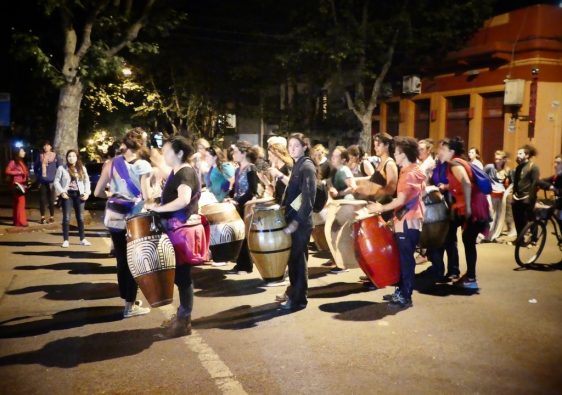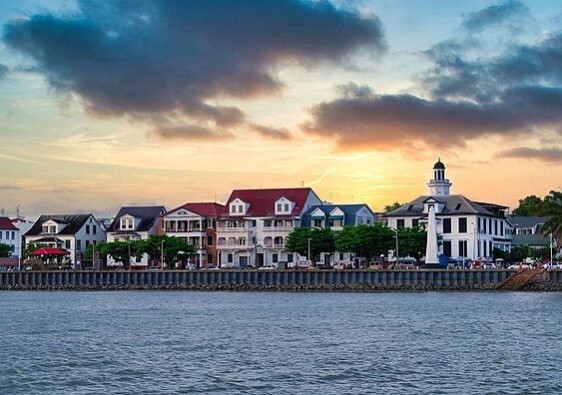Looking for cultural events in Buenos Aires? Or are you maybe looking for what to do in the city on a rainy day, and eager to add some culture to your trip? We’ve got you covered with this list of the best museums in Buenos Aires, Argentina. We’ve gathered a large selection of art museums and performance venues; but also other museums that will shed a light on some major aspects of the country. For each place, you’ll find its address, entrance fee (all prices are in Arg. pesos and true as of summer 2022) and opening hours.
Note: Many of these museums offer an extensive digital gallery of their pieces. So if you don’t have enough time to visit, make sure you check out their website.
Best Art Museums in Buenos Aires
MALBA: Museum of Latin American Art
Official website: Museo de Arte Latinoamericano de Buenos Aires (en)

The MALBA is probably our favourite museum in the Argentine capital. The extensive permanent collection of this privately-owned museum showcases modern Latin American art between 1900-1970.
Visitors who are already familiar with South and Central American art will recognise the most emblematic names, like Frida Kahlo, Diego Rivera, Fernando Botero, Antonio Berni and Tarsila do Amaral just to name a few. Otherwise, it’s a great introduction to South American artists who are well-known on the continent.
Besides, the many temporary exhibits aim at educating about the dynamic and multicultural realities that makes up Latin America, under its different shapes and forms.
| Address: | Av. Pres. Figueroa Alcorta 3415, Palermo Metro: Scalabrini Ortiz |
| Price: | $700 Half-price on Wednesdays |
| Opening times: | Thu-Mon 12:00–20:00; Wed 11:00–20:00 Closed on Tuesdays |
Read our post about MALBA on DailyArt Magazine
MAMBA: Museum of Modern Art
Official website: Museo de Arte Moderno de Buenos Aires (en)
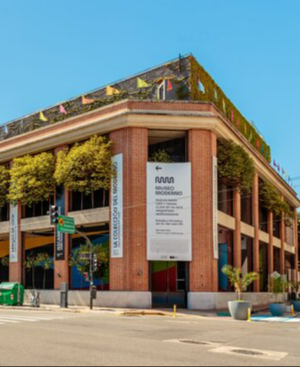
Housed in a former tobacco factory from 1918, this museum shows everything that Argentina has to offer in terms of art, from the most famous names (like Antonio Berni and Raquel Forner) to up-and-coming artists.
The MAMBA counts more than 7,000 works from the 1950’s to modern day, mixing painting, sculptures, photography, industrial and graphic design.
Alongside the permanent collection, which is focused on Argentine artists, the many temporary exhibits are geared towards the museum’s very own mission of always remaining at the forefront of the art world.
It also counts with an interactive space where the whole family can experiment, explore what art means, and connect with their own creativity.
| Address: | Av. San Juan 350, San Telmo Metro: San Juan |
| Price: | $500 Free on Wednesdays |
| Opening times: | Mon, Wed–Fri: 11:00–19:00; Sat-Sun: 11:00–20:00 Closed on Tuesdays |
Travel inspiration: Read why travelling is important
MNAD: National Museum of Decorative Art
Official website: Museo Nacional de Arte Decorativo (es)
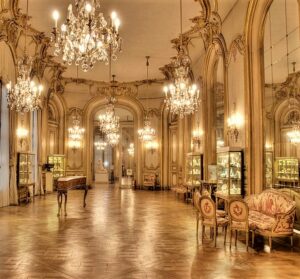
In 1937, the state acquired Palacio Errázuriz, the palace of an aristocratic family. The mansion was designed in 1911 by René Sergent, the French architect who built the Trianon Palace Hotel in Versailles.
Together with the building, the state acquired a collection of art pieces and furniture and opened it to the public.
The museum therefore shows how life, architecture, and design among the high society of Buenos Aires at the beginning of the 20th century. It’s a flamboyant array of 19th–20th century European art in paintings, sculptures, porcelain, furniture and marquetry.
True to their European influence, both the Dining Room and Ball Room remind those of the Versailles Palace.
| Address: | Av. del Libertador 1902, Palermo Metro: Bulnes |
| Price: | Free |
| Opening times: | Wed–Sun: 13:00–19:00 Closed Mon–Tue |
MACBA: Museum of Contemporary Art
Official website: Museo de Arte Contemporáneo (es)
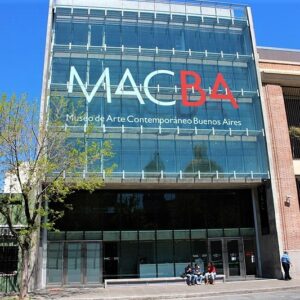
Although it shares similar currents and artists with the Museum of Modern Art, the MACBA has its own unique approach. Its original objective as a private collection was to showcase the importance of geometric abstraction in art throughout the world, and therefore set Buenos Aires as a cosmopolitan hub.
Nowadays, its wide range in abstract art has broadened (to include e.g. kinetic art, hard-edge, post-concrete) and shows works of both Argentine and international artists, from Enio Iommi and Gyula Kosice to Tony Costa, Mack Heinz, Victor Vasarely and many more.
If you can’t make it to its impressive glass building, its 500 pieces are also accessible via the digital collection on the irwebsite.
| Address: | Av. San Juan 328, San Telmo Metro: San Juan |
| Price: | $400 Half-price on Wednesdays |
| Opening times: | Mon–Sun: 12:00–19:00 Closed on Tuesdays |
MNBA: National Museum of Fine Arts
Official website: Museo Nacional de Bellas Artes (en)
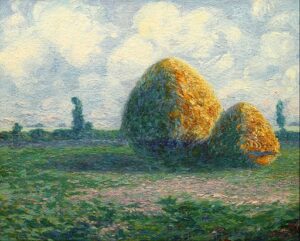
This neoclassical building hosts the reference in fine arts on the continent, probably the most important collection of 19th-century art (mostly impressionists) in South America. It’s also the largest public art collection in Latin America, with more than 12,000 prestigious works by artists like Van Gogh, Goya, Rodin and Toulouse-Lautrec.
Many Argentinian pieces are also present, showing the talent and quality of artists that deserve more recognition outside of their country. On the top floor, there’s also a collection of Argentine art from the 20th century.
We particularly recommend the Fine Arts museum’s online gallery, complete with high-resolution images, accompanying texts and audio recordings.
| Address: | Av. del Libertador 1473, Recoleta Metro: Las Heras |
| Price: | Free |
| Opening times: | Tue–Fri: 11:00–20:00; Sat–Sun: 10:00–20:00. Closed on Mondays |
Xul Solar Museum
Official website: Museo Xul Solar (en)
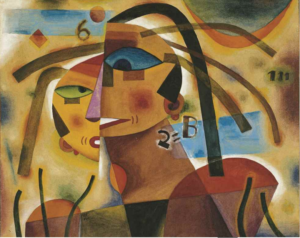
Xul Solar was an interesting character, to say the least. His colourful and esoteric paintings, sculptures and inventions are full of astrology, dystopian realities, floating cities and winged animals, enigmatic symbols and absurd elements.
The building that houses the collection, and where he lived for many years, is representative of that surrealism, with hidden rooms and a stairway that leads to nowhere.
Along with his art, the museum shows his tarot cards, personal belongings, and his own games and inventions – like a brightly-painted piano where he added a third row of keys.
Xul Solar was also an intellectual and invented several languages: a universal language to unite the world, and one designed to unite South America.
| Address: | Laprida 1212, Palermo Metro: Agüero |
| Price: | $500 $300 on Tuesdays |
| Opening times: | Tue–Fri: 12:00–20:00; Sat: 12:00–19:00 Closed on Sundays and Mondays |
Find more best things to do in Buenos Aires besides the museums!
Fortabat Art Collection
Official website: Amalia Lacroze de Fortabat Art Collection (en)
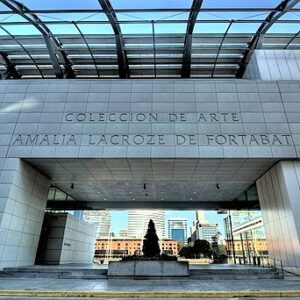
This museum opened to the public in 2008, one of the most recent in the Argentine capital. It gathers the private collection of Amalia Lacroze de Fortabat, an executive and philanthropist, in her time one of the wealthiest women in Argentina. It’s therefore a concrete example of how the wealthy manage to write their place in history.
You will see about 250 works of both Argentine and internationally-acclaimed artists, including Klimt, Warhol, Turner, Dalí, Rodin and Chagall, just to name a few.
Besides the collection, this museum is worth visiting for its architecture and location: an arched glass palace overlooking the Río de la Plata river, with a beautiful view from the 2nd floor.
| Address: | Olga Cossettini 141, Puerto Madero Metro: L.N. Alem / Catalinas |
| Price: | $400 Half-price on Thursdays |
| Opening times: | Tue–Sun: 12:00–20:00 Closed on Mondays |
PROA Foundation
Official website: Fundación PROA (en)
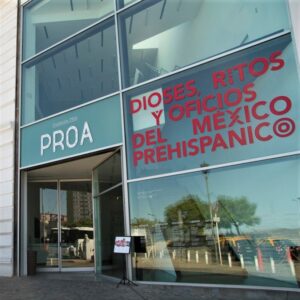
Right at the corner from La Boca’s famous Caminito, the Fundación PROA adds that touch of socio-political awareness that is generally missing from most touristy quarters.
There is no permanent collection here, but an array of temporary international exhibitions, in a programme that is frequently changing. All have in common the desire to be at the social or technological vanguard of the art scene, with innovative technologies, multimedia installations and performance arts.
Whatever the exhibit that’s on at the time of your visit, it’s sure to infuse in you a spark of reflection and creativity.
| Address: | Av. Don Pedro de Mendoza 1929, La Boca Buses: 10, 22, 24, 39, 54, 70, 74, 86, 93, 98,102, 129, 159, 186 |
| Price: | ?? |
| Opening times: | Thu–Sun: 12:00–19:00 Closed Mon–Wed |
Culture hubs for events
CCK: Kirchner Cultural Centre
Official website: Centro Cultural Kirchner (es)
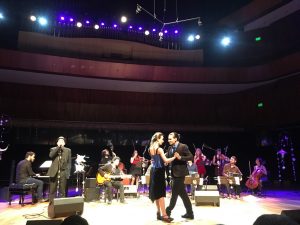
The magnificent building of a former post office was reopened in 2015 as a leading cultural centre, the largest in Latin America, and the fourth largest in the world.
Its large concert hall, 5 auditoriums, and about 60 rooms for art exhibitions, poetry and stage performances are scattered across 9 floors. Visiting the building is already a half-a-day trip!
Here you can enjoy concerts and dance performances, visual arts, classes and workshops, audio-visual productions and guided tours of this historical building. What’s probably the most impressive part though: all activities are absolutely free. Definitely check their calendar of events at the time of your visit.
| Address: | Sarmiento 151, Centro Metro: L.N. Alem |
| Price: | Free |
| Opening times: | Wed–Sun: 14:00–20:00 Closed on Mondays and Tuesdays |
Art Factory
Official website: Usina del Arte (es)
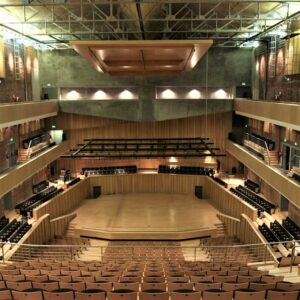
Yet another cultural centre in Buenos Aires, but this one is a tad more alternative. It’s housed in a beautiful brick building, a former electrical plant built at the beginning of the 20th century.
Instead of the big names that might get invited at the CCK, you’ll see here associations and up-and-coming artists in the most varied fields: music, visual arts, dance, gastronomy, theatre, etc.
In La Boca’s Art Factory, there are also many cultural offers for kids and teenagers, along with creative workshops for the whole family.
There again, check the different categories in their calendar of events.
| Address: | Agustín R. Caffarena 1, La Boca Metro: San Juan |
| Price: | Free |
| Opening times: | Fri: 15:00–20:00; Sat–Sun: 11:00–20:00 |
Other types of museums in Buenos Aires
World Tango Museum
Official website: Museo Mundial del Tango (en)

Located in a 1880’s mansion on downtown Buenos Aires’ main avenue, its entrance is right to next the illustrious Café Tortoni.
Founded by Horacio Ferrer –tango’s most prolific lyricist– it traces the history of the genre from its humble beginnings in 1850 until its rise to fame and on to the present day.
Many explanations of lyrics, their meanings and their imagery, make it a thorough documentary on tango and the life of the working class in the harbours of Río-de-la-Plata shortly after the big European immigration.
Besides lyrics and countless photos, there are items that belonged to the big names of tango and milonga. A shop also sells CDs and other tango paraphernalia.
| Address: | Av. de Mayo 833 (1st floor), Centro Metro: Piedras |
| Price: | ?? |
| Opening times: | Mon–Fri: 14:30–19:30 Closed Sat–Sun |
National Historical Museum
Official website: Museo Histórico Nacional (en)
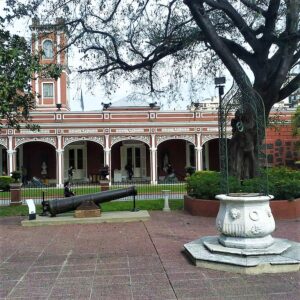
This one is for the history buffs. The National Historical Museum displays objects related to the May Revolution of 1810 and the War of Independence. It showcases paintings, sculptures, flags, weapons and uniforms, as well as everyday objects from the 19th century.
Created in 1880, its goal was to establish a national identity within the young republic, amid the post-war turmoil and the profound changes that were occurring in Argentina.
The highlights of the collection are the sabres that belonged to independence heroes José de San Martín and Manuel Belgrano (two names you are bound to see everywhere during your Argentina trip), and a flag from a decisive battle.
| Address: | Defensa 1600 (in Parque Lezama), San Telmo Metro: Constitución |
| Price: | Free |
| Opening times: | Wed–Sun: 11:00–19:00 Closed Mon–Tue |
Travelling further? Get inspired by our Argentina itinerary!
Evita Museum
Official website: Museo Evita (es)
This museum retraces the life of Eva Perón (1919–1952), the wife of Argentina’s president Juan Domingo Perón. Her name might not mean much to our foreign eyes/ears, besides the fact she was immortalised by Madonna in the 1996 film “Evita”.
In Argentina though, she’s an icon. Even nowadays, the nation is still divided between those who love what she did and those who hate her. Such passion shows the impact she’s had on the country.
The museum showcases objects that belonged to Evita, with interactive exhibitions focusing on her career as an actress, her relationship with her presidential husband, and her political and social work. Various items and photos also serve as a window into life in Argentina in the 40’s.
| Address: | Lafinur 2988, Palermo Metro: Plaza Italia |
| Price: | Free |
| Opening times: | Tue–Sun: 11:00–19:00 Closed on Mondays |
Museum of the Memory and Human Rights
Official website: Espacio Memoria y Derechos Humanos (es)
Located in a former detention centre under Argentina’s dictatorship (1976–1983), this museum acts as a reminder of the cruelty and violence of the several military regimes that have tarnished the history of Latin America.
Many crimes against humanity have been committed here, some of which are still awaiting thorough investigation and justice. This links to the “Madres de la Plaza de Mayo” who, 40 years after the end of the dictatorship, keep on demonstrating every Thursday in honour of their missing ones.
Nowadays, the building acts as an open space, with an exhibition that relates those dark times; but also many activities and workshops to encourage democracy, justice and human rights.
| Address: | Av. del Libertador 8151, Núñez Metro: Congreso de Tucumán |
| Price: | Free |
| Opening times: | Mon–Sun: 09:00–22:00 |
Essential read: All you need to know when you’re backpacking in Argentina!
★


